Projekt-Lebenszyklus: 5 Schritte zur Umsetzung
The Project Life Cycle guides you through the natural phases of a project, from inception to completion, so you can orchestrate a successful project.
Looking to refresh your project management knowledge or find ways to navigate your projects’ complexities more easily?
This dynamic framework might be just what you need!
Let’s dive right in and uncover the five phases of the project life cycle!

TIP: Read our guide if you want to learn everything about project tracking: what is, how to do it, and its importance.
What is the project life cycle?
The project management life cycle is a structured framework that aids project managers in leading their project team and the actual project from start to finish.
The Project life cycle was created by the Project Management Institute (PMI), and this methodology was even expanded in one of the best project management books on the market: Project Management Book of Knowledge (PMBOK).
The project management life cycle framework includes the following five phases:
The project Initiation phase
The project planning phase
The project execution phase
Project Monitoring & Controlling
The project closing phase
The project management institute created the project management life cycle by adding structure to the natural project management process that we’re all aware of. It’s not rocket science, but it helps understand structuring, organizing a project, and identifying if you’re missing puzzle pieces that can jeopardize the project’s progress.
Instead of browsing through an endless book, start reading this condensed breakdown of the project life cycle phases, from the project initiation phase to the project closure phase.
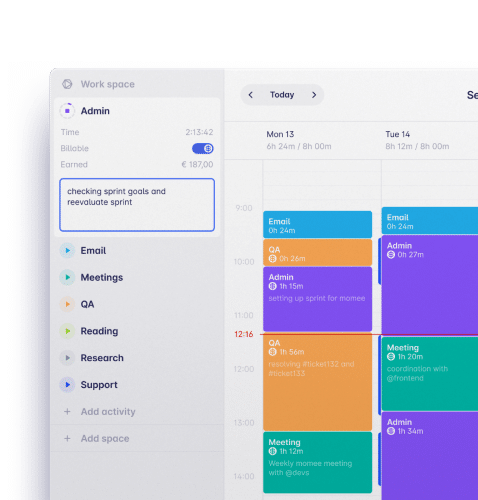
Use automatic time-tracking tools like EARLY to help you manage and control time without effort.
What are the 5 stages of a project life cycle?
In the next part of the article, I’ll dive into the phases of the life cycle phases and expand on each of these five phases of project management. Let’s dive in!
1. Project Initiation Phase
As expected, in the project initiation phase, you’re laying the groundwork for your project.
You’re kicking off the project by gathering all stakeholders of the project and discussing to systematically address all elements you’ll need for project success.
You’ll discuss and clarify the brief and ensure all stakeholders, your project team, and clients align and have a common vision. You’ll also make a project charter and discuss the project scope and project schedule.
Once there’s positive feedback, you’re okay with moving forward.
Key actions in this phase:
Start a project charter: Add the project’s goals, vision, and objectives. Include project documents here.
Identify stakeholders: The project team and people are involved and affected by the project. What is the project’s impact on them?
Feasibility testing: Establish the main problem you’re addressing and discuss if it’s feasible to solve it within the project timeline. If yes, in what ways (schematic)?
Project costs: What are the costs of the projects? Does it align with the planned resource allocation?
Success: Can the project goals be successful? Is it realistic, and what are the key performance indicators on which to measure success?
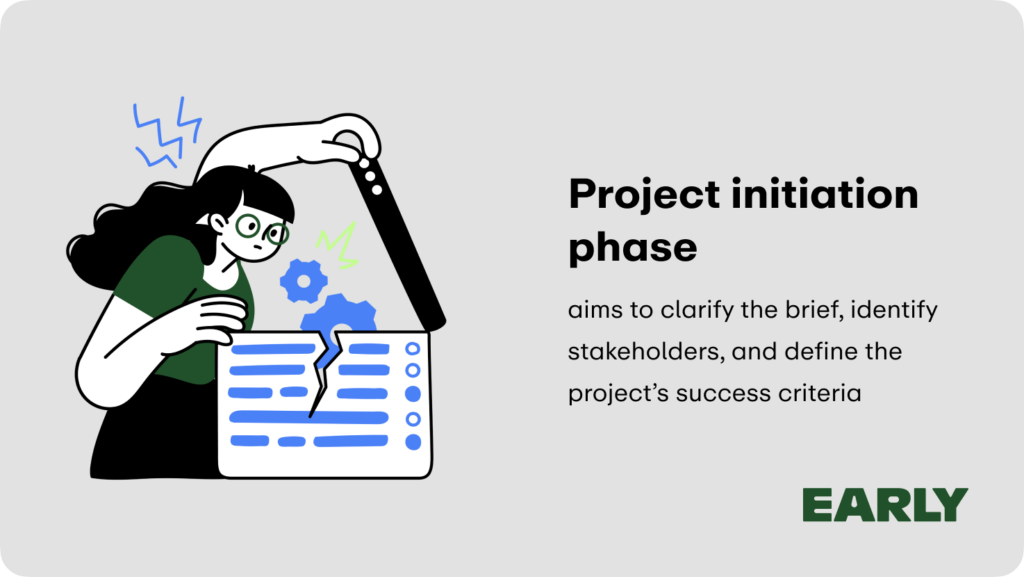
2. Project Planning Phase
Any project manager knows that without a good project management plan, the entire project is at risk. The planning phase is all about planning how the project idea will be brought to life. You need to prepare for any setting, even if that means unforeseen events. To protect your project, there are certain plans you need to look out for.
Key actions in this phase:
Project plan: This entails all the tasks that must be completed throughout the different stages. Make sure you set realistic goals, and a project management checklist with project documentation might be a good idea at this stage;
Resource plan: A list of the project resources needs to be accounted for and listed from human resources and skills that are needed for every specific task during the elaboration of this project;
Risk management plan: Risk management plans are pivotal for all phases of project management and project progress. Estimate what could go wrong in this project, its probability, and other factors that can impact the project plan.
Communication plan: This structures the hierarchy of communication to define who should be in charge of the communication in established periods;
Acceptance plan: As the project progresses, have clear definitions of what a ‘done’ or ‘completed’ task is in the context of your project.
Once the above steps have been considered, add everything to your Gantt chart and start the project execution phase.
TIP: Read our guide to learn what is a risk matrix and how it’s essential for risk assessment.
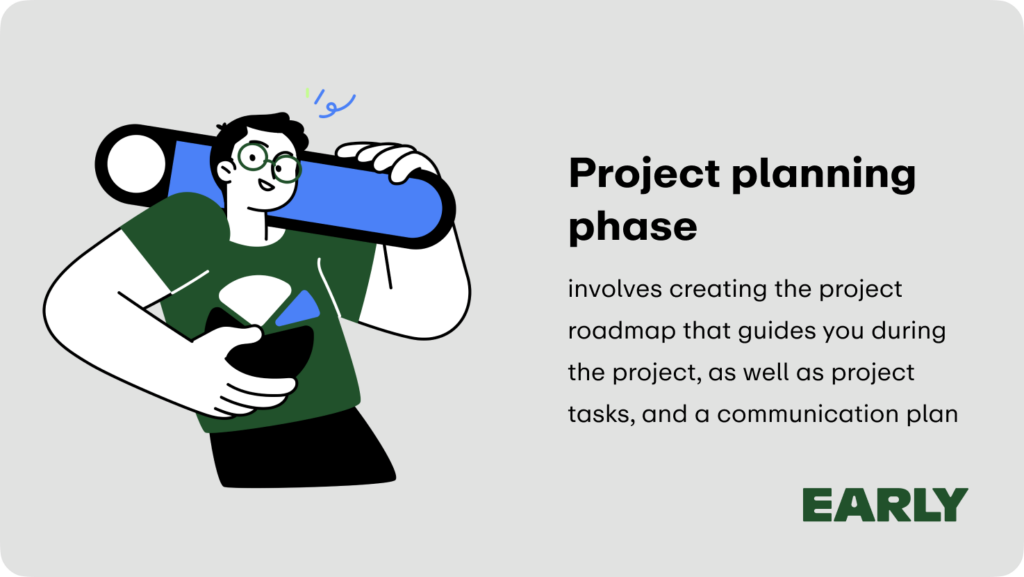
3. Project Execution Phase
The time has come to execute your project plan! This is where everyone gets their hands dirty and starts working on the project itself. The project execution stage typically feels so intense that all other project management phases seem to fade out.
With the plan already designed in the previous stage, everyone is putting effort into executing the project tasks while the project manager makes sure that the plan is going as envisioned.
Now, the main responsibility of the project manager is to steer the project team toward project delivery as smoothly as possible. This phase also involves keeping the relevant stakeholders updated on any development, as well as keeping everything up to date in your project management software.

Use automatic time-tracking tools like EARLY to help you manage and control time without effort.
Key actions in this phase:
Lead your team: Based on the project plan, instill the vision for your project team and enable them to deliver it.
Create tasks: Clearly write in your project management software the tasks that need to be done based on the project’s objectives. Define the criteria for tasks and deadlines.
Client management: Constantly communicate with your client and send across deliverables that need to be validated.
Communication: As you constantly track the progress of the project, you should inform anyone impacted about any updates that affect them directly.
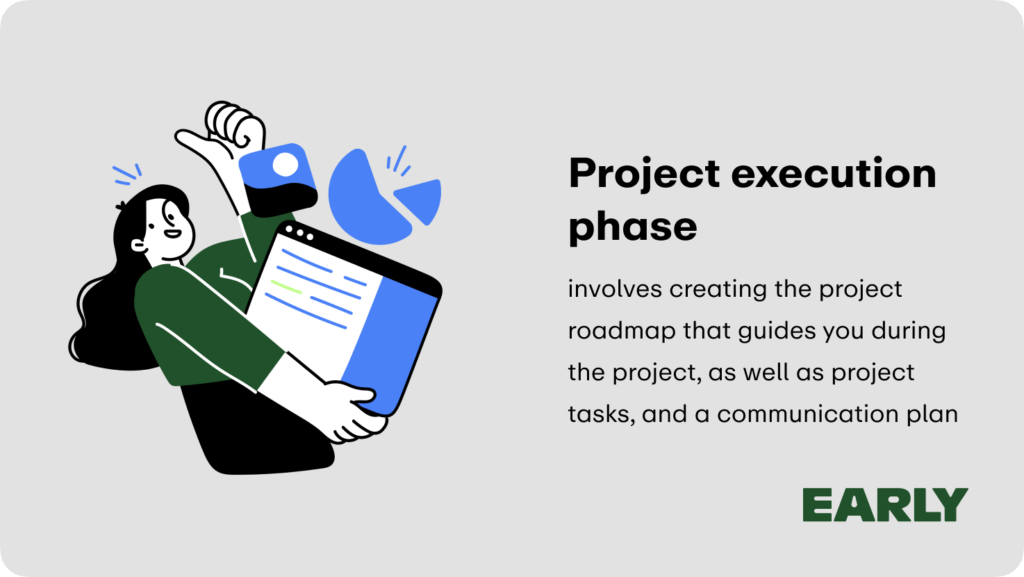
4. Project Monitoring & Controlling Phase
After moving through the project execution stage, this is the time to monitor and control the project. You have to constantly track progress and blockers and observe indicators that ensure that everything is going as expected. You need to observe the following indicators:
Key actions in this phase:
Monitor cost: Budgets fluctuate in every project management life cycle, but you need to review the timesheet apps and track against the timeline. It might help reading more about The best ways to track project expenses.
Time: It’s important to keep your and your team’s time as productive and effective as possible. Make sure that your time budget checks the timeline and that your overall project progress and delivery time are not jeopardized.
Risks: It’s essential to keep track of the risks of any given project so you’re prepared to manage and mitigate any risk that arises.
Change: Monitor the potential and important changes that need to happen in your project. Make sure that you predict the necessity of change instead of dealing with it at the last minute;
Quality: Keep track of the quality of the deliverables during your project, making sure that the level of satisfaction is at an all-time high;
Acceptance: It’s essential to test your product, monitor the user acceptance factor, and approve the project’s completion.
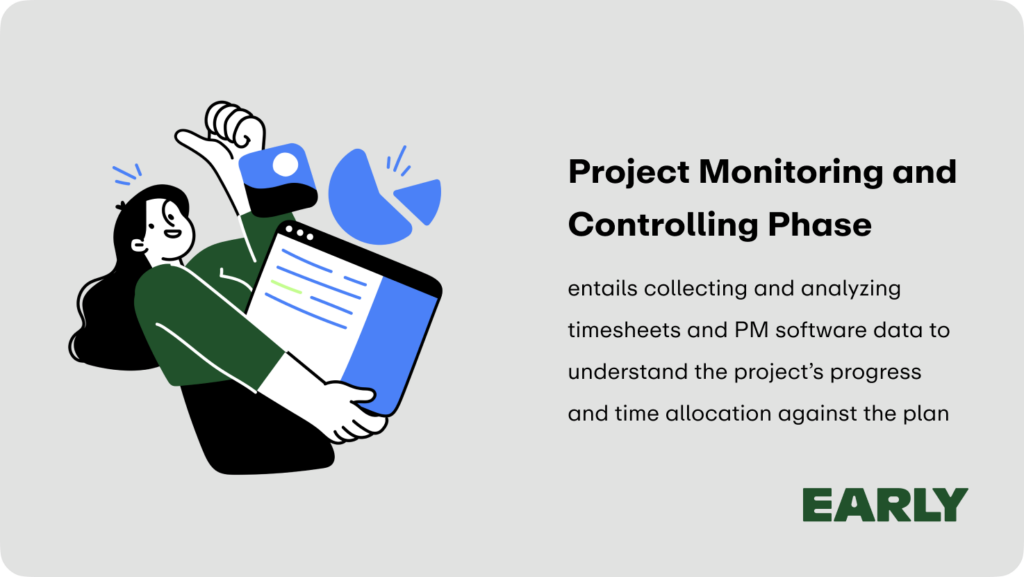
5. Project Closure Phase
This is one the most important stages because it ties everything together that was due until this last step. At this time, the project manager and his team review everything that was done, from the earlier tasks to the finalization of the project.
It’s also important that you evaluate your team’s performance throughout the different stages and keep a record of all the documents and notes that were drafted during this process.
Key actions in this phase:
Project performance analysis: Analyse how the project was managed and whether the costs and time estimations were correct or not. Did you have to manage risks that were not predicted? How did you deal with any unforeseen event?
Team analysis: What was the overall team performance? Did the project team manage to stick to the business case? Were the parts of the project split into manageable tasks for them? Was the team accountable and reliable? What team-related problems did you stumble upon? Did your team struggle with the chosen project management software?
Project closure: The control project closure entails writing the final project documents such as contracts, sign-offs, etc.
Post-implementation review: Write a formal document with all the project management steps you’ve taken, your successes and failures, and recommendations for a future project management life cycle.
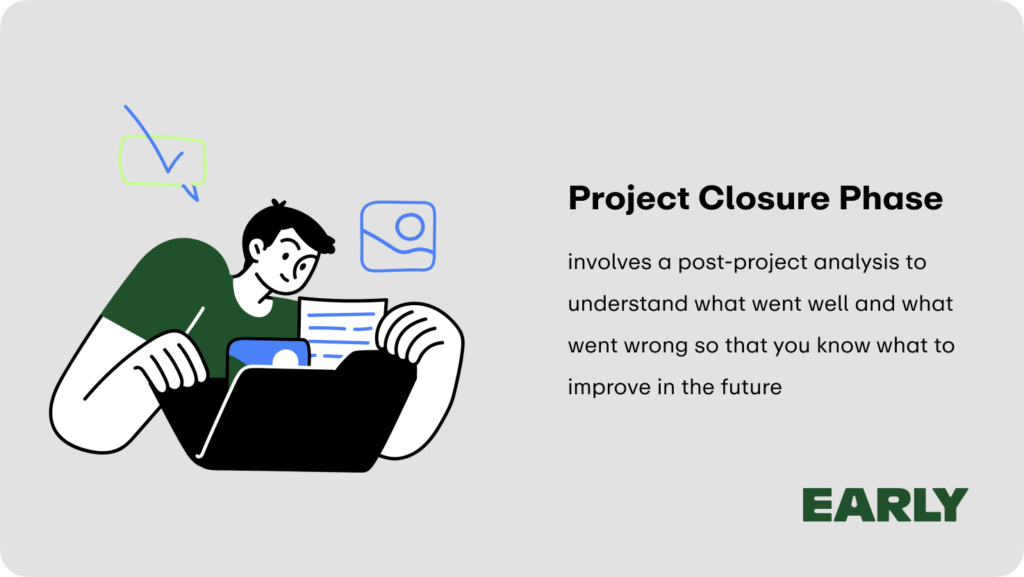
Project life cycle importance and benefits
Helps to provide a clear and organized approach to project management;
Defines the phases that a project goes through;
Helps to ensure that all necessary steps are taken to complete the project;
Identify and manage risks;
Communicates progress to stakeholders;
Ensures that all stakeholders are aware of the goals and objectives of the project;
Aligns stakeholders throughout the life cycle;
Improves project performance outcomes;
Facilitates better and quick decision-making;
Helps to identify potential issues;
Helps in better budgeting and cost control;
Helps to measure the success of a project.
The project life cycle is vital as it provides a structured framework for managing a project from beginning to end. It defines the phases a project goes through, from initiation to closure, and helps ensure that all necessary steps are taken to complete the project successfully.
It also helps to identify, and manage risk, allocate resources, and communicate progress to stakeholders. Additionally, it helps to ensure that all stakeholders are aware of the project goals and objectives of the project and that they’re aligned throughout the life cycle.
Overall, the project lifecycle helps provide a clear and organized approach to project management, leading to improved performance and outcomes.

Use automatic time-tracking tools like EARLY to help you manage and control time without effort.
Fazit
Throughout this article, a common conclusion comes to mind when talking about this method – the journey to success. Although it’s a trivial concept, the Project life cycle and other methods aim to help you through the different steps your project might take along the way.
There’s a range of models that could help you in countless ways, but the Project life cycle allows you to shorten the long process of your project and clear the way with only five precise steps. If you stick to the knowledge this method offers, you’ll easily adapt and improve the way you work on future projects.